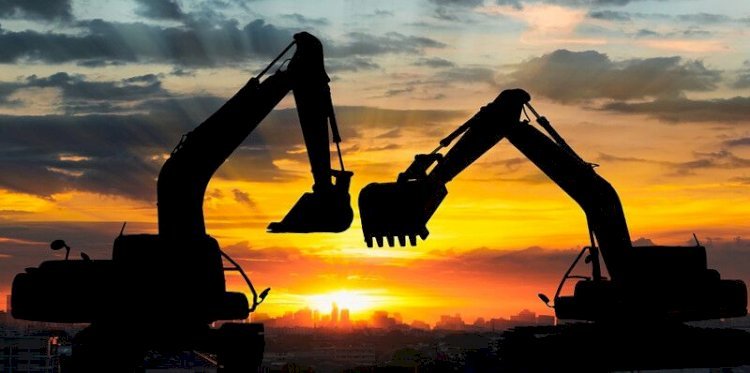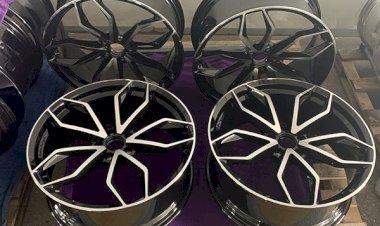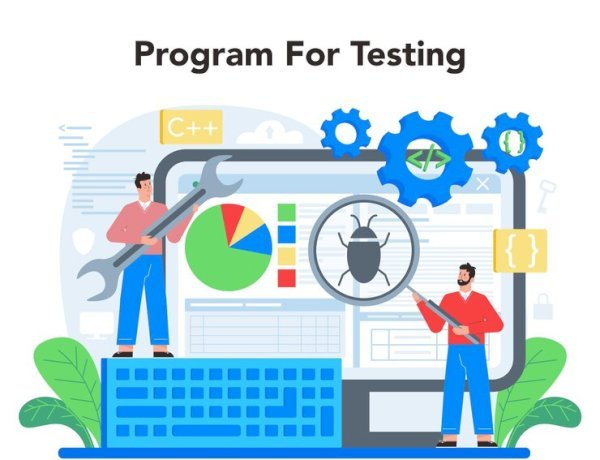Digger Finance Explained – How U.S. Contractors Can Buy or Lease Excavators & Plant Equipment
Learn how Digger Finance helps U.S. contractors buy or lease excavators and plant equipment in 2025, explore loan, lease, and rental options with verified rates and benefits.

Buying or leasing heavy machinery like excavators and loaders is one of the biggest financial decisions a contractor can make. In 2025, many U.S. contractors face higher equipment prices, stricter emissions rules, and tighter cash flow. That’s why Digger Finance has become such an important solution.
Digger Finance lets you acquire the machinery you need through flexible payment plans — loans, leases, or hire-purchase options — instead of paying the full cost upfront. It’s used by small landscaping firms, large civil contractors, and everything in between. With help from manufacturer-backed finance programs such as Cat Financial and John Deere Financial, as well as banks and specialized lenders, getting funding for excavators and plant equipment is now faster and more transparent than ever before.
The U.S. construction equipment finance market is thriving, with the global market estimated at over $103 billion in 2025 and a large share coming from North America. With infrastructure projects growing under federal and state funding programs, knowing how to use Digger Finance wisely can make your business more profitable and resilient.
What Digger Finance Means for U.S. Contractors

Image source: pinterest.com
In simple terms, Digger Finance refers to any financial plan that allows you to use or own heavy machinery by paying in instalments. It can include:
-
Equipment Loans (Hire Purchase) – You borrow money to buy the machine and pay it off over time.
-
Leasing – You use the equipment for a set period and pay rent-like instalments.
-
Rental or Short-Term Hire – You pay to use the machine for a job without ownership responsibility.
Each option has different costs and benefits. Contractors typically choose based on project size, duration, and financial goals. For example, an excavation company with continuous work may prefer owning machines through a loan, while a smaller contractor might lease to avoid long-term commitments.
Many U.S. dealers partner with banks and OEM finance arms so that you can finance your purchase directly at the dealership. This makes the process faster and less paperwork-heavy.
The Main Financing Options and How They Differ

Image source: pinterest.com
The three key options in Digger Finance — loan, lease, and rental — all help you get access to the same equipment. The difference lies in ownership, risk, and long-term cost.
Here’s how they compare:
-
Loans / Hire Purchase: You pay monthly instalments (usually fixed rate). Once paid off, you own the digger outright. Good for businesses using machines 1,500–2,000 hours a year.
-
Leases: The lender retains ownership. You return or upgrade the equipment at term end. Good for avoiding depreciation and enjoying newer models.
-
Rentals: High flexibility and zero maintenance, but higher cost per month. Ideal for short jobs or when testing a new model.
In 2025, many U.S. lenders, including Cat Financial, Wells Fargo Equipment Finance, and DLL, offer all three options.
How the Approval Process Works

Image source: pinterest.com
The approval process for Digger Finance in the U.S. has become faster thanks to digital systems. Still, lenders perform several checks to ensure reliability and compliance.
Typical steps include:
-
Application submission through your dealer or finance provider.
-
Credit and financial review, including bank statements, business tax returns, and outstanding loans.
-
Collateral evaluation — especially for used machines.
-
Contract offer and signing.
-
Equipment delivery once the finance is approved.
Lenders typically evaluate:
-
Time in business (usually at least 2 years preferred).
-
Annual revenue and contract pipeline.
-
Credit score and debt ratio.
-
Type, age, and value of the equipment.
In 2025, U.S. equipment loans often range from 7.5% to 10.5% APR depending on credit and machine age. Many OEM lenders provide seasonal payment plans to match construction cash flow — lower payments in winter and higher in summer.
Buy, Lease, or Rent — Which Is Right for You?

Image source: pinterest.com
Choosing the right finance route depends on how long and how intensively you’ll use the equipment.
Buying (Loans):
-
Suitable for high-usage machines and long-term work.
-
You build equity and can resell later.
-
Eligible for depreciation and Section 179 tax deductions.
Leasing:
-
Best for upgrading every 3–5 years or when you want predictable costs.
-
Lease payments can often be deducted as business expenses.
-
No risk of depreciation at the end of term.
Renting:
-
Ideal for projects lasting weeks or months.
-
No ownership or maintenance.
-
May include operator or service in package.
For example, if you run 2–3 big projects annually and store equipment off-season, leasing or rental may cost less overall. But if your machines run 1,500+ hours per year, owning via Digger Finance is typically cheaper over time.
Read Also: Alloy Wheel Finance – How It Works & Safer Ways to Pay (2025 Guide)
Benefits and Risks of Digger Finance

Image source: pinterest.com
Benefits:
-
Cash flow protection: Keep capital free for payroll, materials, and bids.
-
Access to new tech: Use modern, fuel-efficient diggers that reduce job time.
-
Tax advantages: Deduct interest, depreciation, or lease payments.
-
Budget stability: Fixed monthly payments make forecasting easy.
-
Fleet flexibility: Easy to add or upgrade machines as projects scale.
Risks:
-
Interest cost: You pay more overall compared to upfront purchase.
-
Maintenance burden: Ownership means repair and insurance responsibility.
-
Residual value risk: Machines may depreciate faster than expected.
-
Usage limits: Lease contracts may cap machine hours.
-
Market cycles: If the economy slows, resale values drop.
In short, Digger Finance gives freedom and growth potential — but only if used strategically with awareness of costs.
Market Context, Rates, and Terms (2025)

Image source: pinterest.com
According to Future Market Insights, the global construction equipment finance market surpassed $103 billion in 2025 and is expected to almost double by 2035. The U.S. segment is one of the largest due to the scale of construction spending.
Typical U.S. digger finance structures in 2025 include:
-
Loan terms: 24–84 months.
-
Lease terms: 12–60 months.
-
Rates: 7.5–10.5 % APR for good credit.
-
Down payment: 10–20 % common for used equipment.
Banks, credit unions, and OEM finance divisions all compete heavily for business, leading to more favorable programs, including zero-payment promotions for the first 90 days and trade-in credits for older machines.
The trend shows smaller contractors gaining easier access to financing due to improved online credit evaluation and fintech tools that speed up approvals to under 48 hours for standard deals.
Preparing a Strong Application

Image source: pinterest.com
A well-prepared digger finance application improves approval chances and reduces interest rates. Before applying, make sure you have:
-
Recent tax returns (2 years) and bank statements (6 months).
-
Proof of business registration and insurance coverage.
-
A list of upcoming contracts or signed bids.
-
Maintenance or service agreements if you already operate machines.
Tips to strengthen your application:
-
Offer a larger down payment to show commitment.
-
Demonstrate steady project revenue and cash flow.
-
Choose reputable dealers — lenders trust pre-vetted machines.
-
Ask for flexible payment options to match project billing cycles.
Many U.S. lenders such as Wells Fargo Equipment Finance and CIT Bank provide customized documentation checklists and can pre-approve contractors with strong portfolios.
Common Mistakes and How to Avoid Them

Image source: pinterest.com
Even experienced contractors sometimes make costly finance mistakes. The most frequent ones are:
-
Ignoring the total cost of ownership. Focus not just on monthly payments but also insurance, repairs, and fuel.
-
Overestimating usage. Buying a large machine for small jobs reduces ROI.
-
Accepting the first offer. Compare at least three quotes — rates vary widely.
-
Missing hidden fees. Some leases charge extra for early returns or excess hours.
-
Skipping maintenance. Poor service records lower resale value.
To avoid problems:
-
Track machine hours carefully.
-
Keep a clean payment record to build credit for future equipment.
-
Revisit your contract annually to see if refinancing or upgrades could save money.
The best contractors treat Digger Finance as part of a long-term asset strategy — not just a short-term loan.
Choosing the Right Finance Partner

Image source: pinterest.com
Your finance partner determines not only the rate but also your experience throughout the equipment’s life cycle. Choose partners who:
-
Understand construction industry cash flow.
-
Offer transparent terms with no hidden end-of-lease surprises.
-
Provide fast approvals and easy digital documentation.
-
Support trade-ins or upgrades mid-term.
-
Have positive reviews from other contractors.
Top finance sources in the U.S. (2025):
-
Cat Financial – strong dealer network, flexible leases.
-
John Deere Financial – low-rate programs and loyalty benefits.
-
Wells Fargo Equipment Finance – broad lending and fleet solutions.
-
DLL Group – specialized construction finance.
-
CIT Bank – quick approvals for small to mid-sized contractors.
Before signing, ask for a clear breakdown of:
-
Monthly cost
-
Fees and penalties
-
Buyout or return options
-
Insurance and maintenance responsibilities
Choosing a reliable lender ensures stability and avoids interruptions when projects depend on your machines being delivered on time.
Conclusion
In today’s U.S. construction landscape, Digger Finance is no longer optional — it’s a smart way to grow while protecting your balance sheet. Whether you’re financing one excavator or an entire fleet, understanding how loans, leases, and rentals work helps you plan better and avoid financial stress.
The key to success is preparation: know your usage, compare multiple offers, and partner with trusted lenders who understand your business. With the right financing structure, you can keep projects moving, upgrade your fleet, and maintain healthy cash flow — turning every machine into a profit-generating asset.
FAQs
Q1. What is Digger Finance?
Digger Finance refers to equipment loans, leases, or rentals that let contractors acquire excavators and other machinery through instalments instead of paying upfront.
Q2. What are average interest rates in the U.S. for 2025?
Between 7.5% and 10.5% APR, depending on credit score, loan term, and machine type.
Q3. Is leasing better than buying?
Leasing is better if you prefer flexibility and frequent upgrades; buying is ideal if you use the machine heavily and want ownership and resale value.
Q4. How long does approval take?
Most standard applications are approved in 1–3 business days, especially through dealer programs or online lenders.
Q5. Can small or new contractors get Digger Finance?
Yes. OEM lenders and fintech platforms now offer programs for small businesses, often requiring higher down payments but simpler documentation.




























